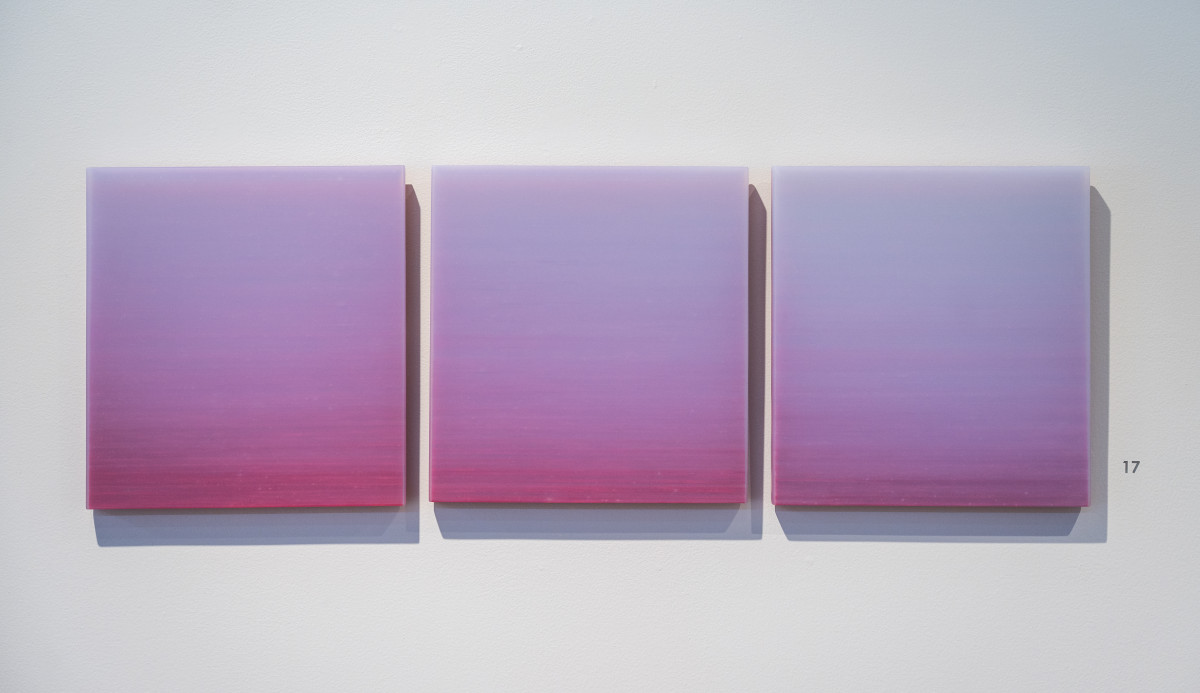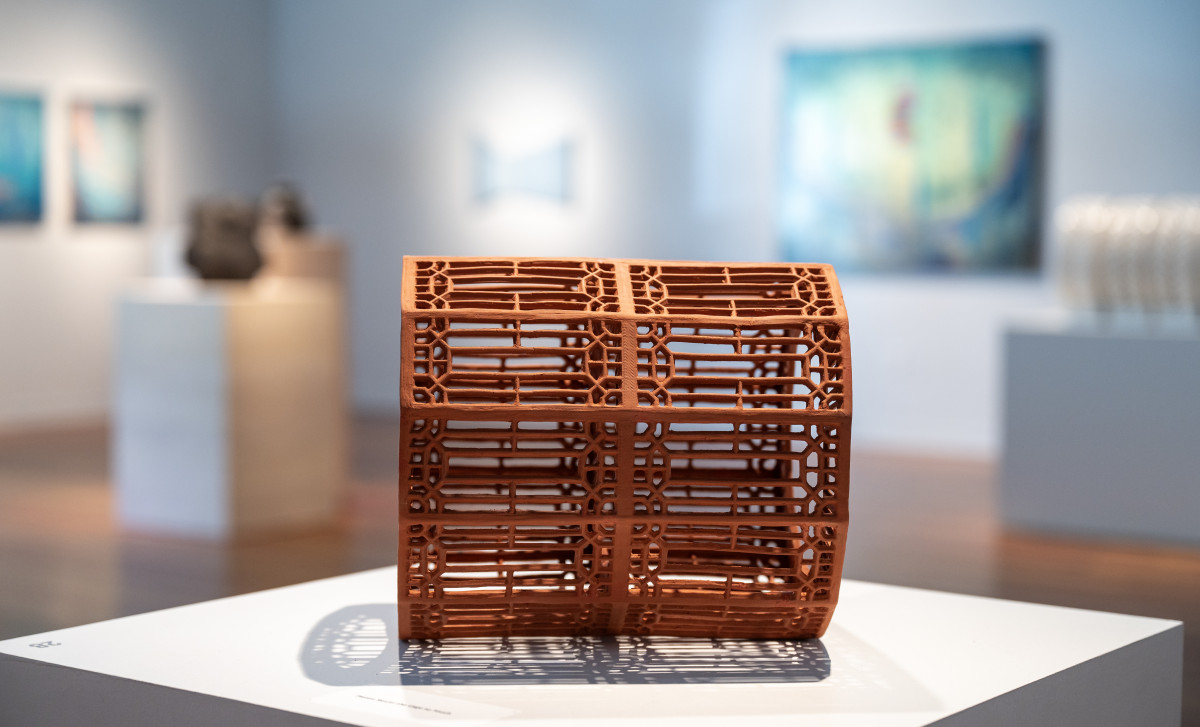
Julia Weber
Staff writer
Strohl Art Center’s main gallery space hosts a dialogue through Chautauqua Visual Arts’ aptly-titled exhibition “In Conversation.”
The exhibition brings together a number of conceptual and installation pieces to engage in a dialogue about the role of pattern and repetition in art.
Closing today, the exhibition is curated by Susan and John Turben Director of CVA Galleries Judy Barie and Associate Director of CVA Galleries Erika Diamond to commemorate 10 years of working together, according to the curatorial statement.
“This exhibition celebrates the conversation between two curators, as well as these six multidisciplinary artists, who now speak to each other within this space,” the curatorial statement explains.
Installed on one wall of the gallery, Molly Hatch’s “Aspire: After Meissen” is a collection of porcelain plates with a floral design that spans the collection, telling a story through many individual pieces.
The pieces, when looked at individually, are much more abstract. As a collection, though, a bigger picture appears to the viewer, serving as a microcosm for the overall effect of the exhibition itself.
Arielle Zamora’s nearby paintings are rhythmic and contemplative. Zamora finds inspiration in urban symmetry and uses this as a focal point in her work. She finds the symmetry of both natural and man-made architecture to be grounding.
She hopes that viewers will think about the relationship between color and shape, and how these design components impact their own experiences in viewing her work.
“I hope that they see or at least feel how color and shape relationships can affect a space or even an inner personal space or a physical space outside of themselves,” she said. “I really am a true believer that when we’re surrounded by beauty or function or simplicity that it really affects how we live.”
Positioned on pedestals in the room are Eliza Au’s stoneware sculpture pieces. The pieces almost look woven, created with intricate patterns that are especially significant given the delicacy of clay.
“Within the many facets of life, we experience a chaos of the mind, which we seemingly cannot escape. I am interested in the human need for peace of mind and what physical, ornamental forms this takes,” her artistic description states.
Au’s work is on a quest to understand solitude. She works computer-aided design, or CAD, to design her work which is later 3-D printed and cast in clay, according to her artistic description.
This process takes repetition to the next level through the printing and casting process, allowing Au to explore the boundaries of the medium and the possibilities afforded by the design process.
Karlyn Sutherland’s installation pieces focus on glass and light, and how the two interact to evoke different emotions.
For Katya Heller, Sutherland’s representative, the “fleeting kind of notion of a moment in time that (Sutherland) captures in the work” is outstanding.
Heller sees Sutherland’s work in conversation with other pieces in the exhibition both in terms of the focus on portrayal of place and the process of repetition.
“There’s a lot of technical thought and innovation that has gone into the making of the work as the work has developed,” Heller said.
Donté Hayes’ handbuilt ceramic sculptures explore the comfort afforded by repetition and pattern. He builds the pieces by assembling coils into a form, then using a needle to impart the rough texture on the surface of the forms. He’s inspired by a lot of pop culture, including hip hop music and science fiction.
“I compare the construction and deconstruction of materials to the remix in rap music and how human beings adapt to different environments and reinvent new identities,” he said.
“Abstraction is not something to be scared of,” said Hayes. He hopes that viewers will approach the work with an open mind and take the time to think about the conversation that “In Conversation” proposes.
Gabe Brown’s oil paintings aim to explore the unknown in a quest for understanding how we relate to our surroundings. Deep blue hues paired with pigmented, striking brush strokes portray the vastness of the unknown and uncertainty that comes with being human.
Her paintings tend to surface organically. She layers her paints, allowing the paint to “see what the painting needs, rather than (her) telling the painting what it needs.”
Brown’s work, like the exhibition overall, explores the unknown, but doesn’t seek to find answers.
“I hope I never find it. I’m a seeker,” she said. “I’m very interested in the power of uncertainty and that’s a huge part of the human condition.”










